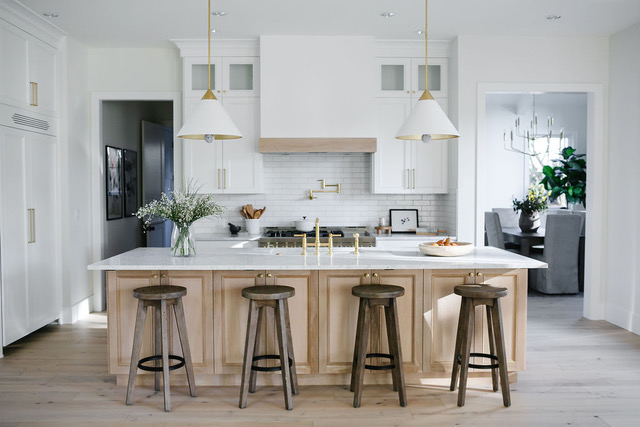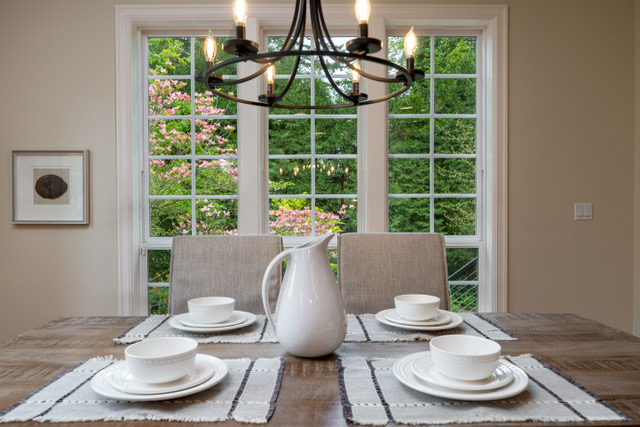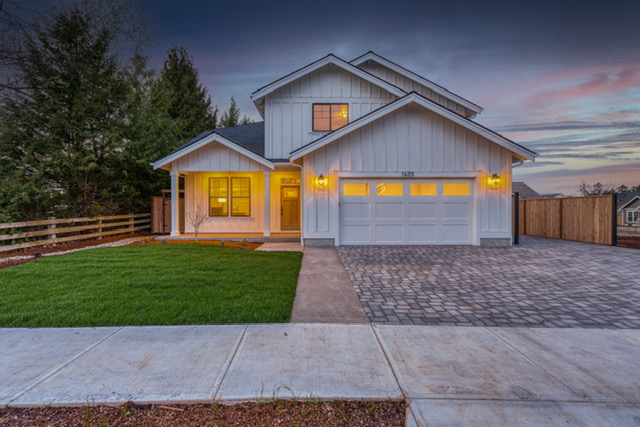Lighting is a subtle but powerful tool in the world of home staging. When harnessed correctly, it can transform a house into a warm and inviting home. In this article, we’ll explore why lighting in home staging is a critical aspect, how it influences buyer perceptions, and provide expert guidance on choosing the right lighting for different spaces.
The Importance of Lighting in Home Staging
Sets the Mood
Lighting plays a pivotal role in setting the mood of a space. Whether it’s creating a cozy, intimate atmosphere in the living room or an energizing ambiance in the kitchen, lighting can influence the emotions of potential buyers.
Highlights Key Features
Properly placed lighting can draw attention to a home’s standout features, such as architectural details, artwork, or a stunning view. This accentuates the unique selling points of the property.
Creates an Inviting Environment
A well-lit home feels inviting and spacious. It encourages potential buyers to explore and imagine themselves living in the space. Adequate lighting can make rooms appear more open and welcoming.
Evokes Emotional Connection
Lighting is a powerful tool for creating a sensory experience and emotional connection. The right lighting can make a house feel like a home, a place where memories can be made. Buyers are more likely to connect with a property on a deeper level when the lighting is carefully considered.
The Science Behind Lumens & Color Temperature in Home Staging
Have you ever wondered why some spaces feel cozy and welcoming, while others are bright and energetic? It’s not just magic. It’s the science of lighting. When it comes to lighting in home staging, two key factors come into play: lumens and color temperature.
Lumens: Brightness at Its Core
Lumens are a way to measure the brightness of light. Think of them as the “power” of your light bulb or fixture. The higher the number of lumens, the brighter the light. In home staging, the number of lumens you choose can greatly affect how a room feels.
- Cozy and Warm Spaces: For spaces where you want that cozy, warm feeling, like the living room or the bedroom, lower lumens (around 20-30 per square foot) work well. These create a soft, inviting glow that’s perfect for relaxation and connecting with a space.
- Task-Oriented Areas: In spaces where you need to get things done, like the kitchen or a home office, you’ll want more lumens (about 50-70 per square foot). This level of brightness provides better task lighting, ensuring you can see what you’re doing with clarity.
- Accent Lighting: For accent lighting, such as highlighting artwork or architectural features, you can use even fewer lumens. Here, it’s more about drawing attention to specific points of interest rather than overall brightness.
Color Temperature: The Warmth or Coolness of Light
Color temperature is another scientific concept that affects how we perceive light. It’s measured in Kelvin (K). Lower Kelvin values (around 2700K to 3000K) produce warm, yellowish light, while higher values (3500K to 4100K) give off a cooler, bluish-white light. So, what does this mean for home staging?
- Cozy and Inviting: Lower Kelvin values (2700K to 3000K) create that cozy, inviting atmosphere you often want in living spaces. The warm, gentle glow is perfect for setting the mood and making a space feel like home.
- Task-Oriented Brilliance: In task-oriented areas like the kitchen or a workspace, you’ll want slightly cooler light (around 3500K to 4100K). This cooler light helps with focus and productivity.
- Be Cautious with Ultra-High Kelvin: Very high Kelvin values (5000K or more) can produce a clinical or sterile feeling. It’s essential to find the right balance, keeping in mind the room’s purpose and the emotional connection you want to create.
Understanding the science of lumens and color temperature can help you make informed decisions when choosing lighting for different spaces. It’s all about finding the right balance to create an environment that appeals to the senses and makes potential buyers feel at home.
How to Choose the Right Lighting for Different Spaces
Living Areas
For living rooms and bedrooms, use warm, soft lighting to create a cozy and comfortable ambiance. Consider table lamps, floor lamps, and wall sconces to provide a warm, even glow.
Kitchens & Workspaces
Task-oriented spaces like kitchens and home offices benefit from brighter, cooler lighting. Consider fixtures like pendant lights or under-cabinet lighting to provide ample illumination for specific tasks.
Bathrooms
In bathrooms, balanced lighting is crucial. Overhead fixtures combined with wall sconces on either side of the mirror offer even, shadow-free illumination for grooming.
Outdoor Spaces
Don’t forget about outdoor areas. Well-placed outdoor lighting can highlight the architectural features of the home and create a warm, welcoming entry.
Natural Light
Whenever possible, maximize natural light. Clean windows, keep curtains or blinds well-maintained, and ensure natural light floods the space during showings.
Lighting Control
Consider installing dimmer switches to provide flexibility in adjusting the lighting to suit different moods and occasions.
Lighting in home staging is an art form that requires attention to detail and a keen understanding of how to create a compelling atmosphere. The right lighting can transform a property, evoke emotions, and help potential buyers envision a future in the space. As you embark on your home staging journey, remember that it’s not just about the furnishings. It’s also about how you illuminate the dreams and possibilities that a home can offer.



